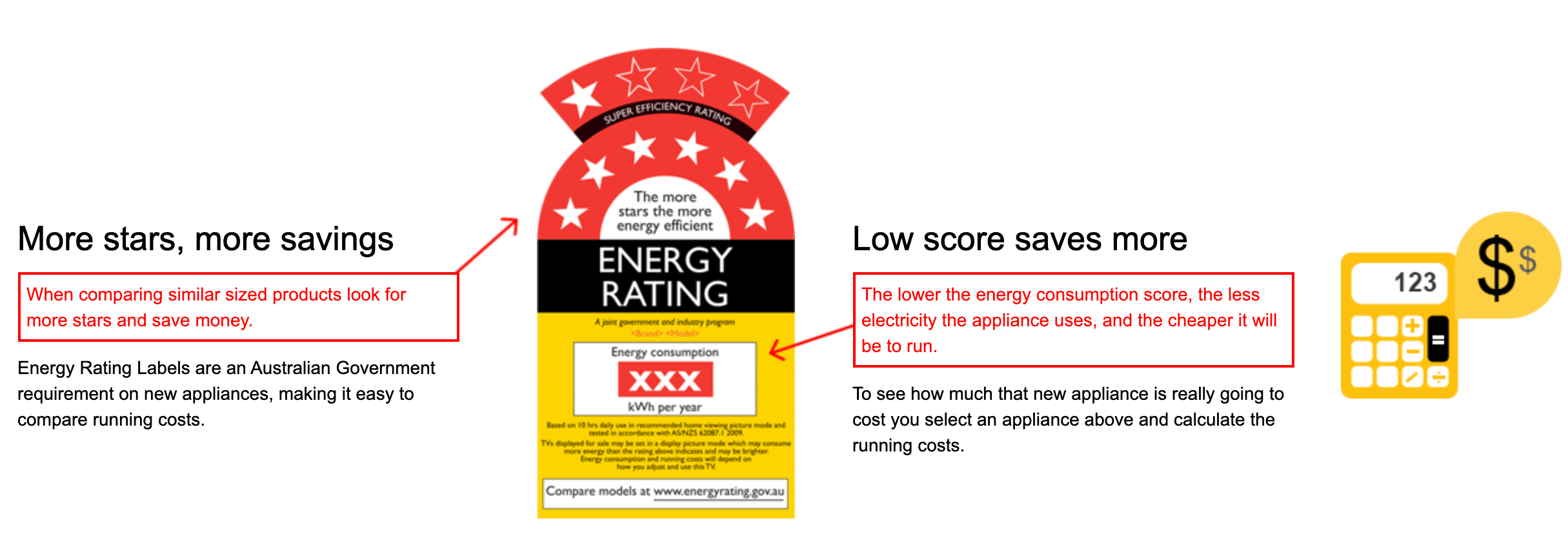More of us are tapping into the green craze as we become increasingly aware of the impacts of climate change. If you want to do your bit and reduce your environmental footprint, here are some practical ways to renovate your home to make it more sustainable.
In this article we’ll:
- Talk about practical ways to renovate your home to make it greener
- Chat with two Australians who have built their own sustainable homes
- Explain how you can finance your renovations through a green personal loan
Finance your green home renovation
Renovating your home to make it green can be expensive initially, but a green personal loan can help make those costs more manageable. Check out some low rate green personal loans below.
How to renovate your home to make it greener
Consult the experts
It’s definitely possible to do some of the smaller renovations yourself, but when it comes to building or designing a sustainable house, it’s best to consult the experts. Just ask housing affordability expert and tradie Ian Ugarte, who built his own sustainable home in 2019.
“When it comes to other renovations to make your home more sustainable, it’s definitely important to employ specialist tradespeople,” Mr Ugarte told Savings.com.au.
“Be sure you’re dealing with the tradespeople or specialists themselves, not just product suppliers without the technical know-how or experience.”
When it comes to choosing a designer, builder or architect for your green home, check their qualifications and examples of other green homes they have worked on. It’s also important to make sure your builders and designers are up to speed with green building regulations in your area.
The Housing Industry Association (HIA) has GreenSmart certification which teaches environmental building skills for sustainable residential design and construction. Make sure your builder or developer is GreenSmart certified (they should have this information on their website).
If you’re trying to achieve a high NatHERS rating (one of the main eligibility criteria for a green home loan), it’s worth hiring NatHERS experts. That’s what science journalist and CEO of ScienceAlert Fiona MacDonald (pictured below), who is currently building her own sustainable home is doing.
“We have used an architect who is trained in NatHERS software to help us design the house for orientation and he has helped us specify insulation and glazing that will help us meet our sustainability requirements,” Ms MacDonald told Savings.com.au
Use passive design
Passive design is design that considers the climate the property is in to maintain a comfortable temperature range in the home with minimal artificial heating or cooling required. Homes with good passive design instead capture natural sources of heating and cooling like the sun and cooling breezes.
Elements of passive design include orienting the home to take full advantage of those natural heating sources, as well as insulation, double glazing and thermal mass.
“We're reducing the glazing on the east, south and west sides, and being smart with the glazing to the north, to make it feel very light and open and enhance indoor/outdoor connection,” Ms MacDonald said.
“The open plan living, dining and kitchen area faces to the north/north east. This means that we will get all the beautiful winter sun to heat that room during the colder months.
“In the summer months we are going to use shade cloths and also a large jacaranda tree we already have in the backyard to keep out the harshest light. We have cross ventilation in the main living areas to capture the summer breeze every afternoon.”
Select the right materials
When you’re looking for materials for your sustainable home renovation, keep an eye out for materials that are:
-
Recyclable
-
Re-usable or salvaged (stone or timber)
-
Materials with a long lifespan (concrete, brick, stone, steel)
-
Renewable (cork, bamboo)
Mr Ugarte said renovators should look for materials that are thicker and denser since these are better able to retain their thermal capacity.
“Unfortunately, in Australia, it's almost like we build houses back-to-front. In other words, instead of a typical brick veneer home with the brick on outside, we should ensure that the internal skin is made out of brick and the external skin is a lightweight construction, since it would be better able to retain its thermal capacity and we wouldn’t be constantly trying to heat up or cool down the external layer of the house,” Mr Ugarte said.
“Obviously, things like timber don't retain heat well, but this can be improved by installing insulation in roof linings.
“The type of insulation materials are important too, and I would always recommend a natural fire-retardant product rather than products made out of petroleum or fiberglass.”
Ms MacDonald said she’s using readily available materials, like cork, in her sustainable home.
“We chose cork flooring because it's renewable - it is made from the bark of a tree, so trees don't need to be cut down. A lot of cork companies are now using waste from the wine industry as well.
“If we wanted to be truly sustainable, we would have gone with polished concrete, as it has great thermal mass. But I also really love the feel of cork flooring and wanted something soft underfoot. It's also durable and the modern finishes on cork are beautiful.”
Insulate your home
If your home isn’t insulated, up to 40% of your home's warmth can be lost in winter. In summer, an uninsulated home will be like an oven. Not only is this an uncomfortable way of living, it also means your energy bills will be much higher trying to cool or heat the home.
Some of the most common sustainable insulation materials include:
-
Glasswool
-
Polyester
-
Sheep’s wool
-
Cellulose
-
Earthwool
Energy efficient windows
There’s a lot to consider when it comes to windows: glazing, size and position, sealing, heat transfer and so on can all influence how much heat or cold is lost or gained through the house.
Mr Ugarte said there are also different types of thermal paints or window coverings and tints that can be applied to windows to reflect heat away from your home.
Windows may be a high cost item in your renovation budget but it’s worth getting it right as energy efficient windows can have a significant impact on your power bills. The Window Energy Rating Scheme has more information on how to select windows.
Sealing
Air leakage can account for up to 25% of heat loss from a home in winter and much of the coolness if you’re using an air conditioner, leading to higher energy bills.
Doors and windows should be properly sealed, downlights should be avoided, chimneys should be able to be closed off, and do your research when picking skylights as these can leak heat and allow unwanted heat gain.
Energy efficient appliances
A green home isn’t complete without the right appliances. When choosing energy efficient appliances go for the product with the highest number of stars. Some appliances like washing machines and dishwashers also have star ratings for water use.
Go to the Energy Rating website to compare the energy efficiency of appliances.

Source: Energy Rating Calculator
Mr Ugarte said one of the most efficient heating systems for hot water is a heat pump, which uses the ambient temperature of the air to extract the heat to heat the water.
“It's sort of like a reverse fridge and uses a lot less electricity,” he said.
He said it doesn’t always make sense to get rid of a hot water heater that’s only a few years old to replace it with a different type of hot water system.
“That’s because there's been a lot of energy used creating that perfectly functioning hot water heater, in which case it's not sustainable to take it, toss it away for metal recyclers to have to crush and reheat just so you can save some money down the track.”
Solar energy
Once you’ve laid the groundwork in your energy efficient home, it’s time to top it off with solar energy so you can generate, store and use your own electricity.
“You can also opt for solar electric, where you can sell back to the grid, but it’s important to ensure that since power is produced during daylight hours, you need to use the power during daylight hours to maximise on the cost savings,” Mr Ugarte said.
“You can also install a solar hot water system where you've got solar panels on the roof or use a panel system that uses what’s called an ‘evacuated tube’, which has a great thermal capacity to transfer heat into the water.”
If you are considering installing solar panels, consider how much money you’re likely to save on your power bills. In most cases, solar panels end up paying themselves off through the savings you’ll make on your utility bills.
You may even want to consider solar battery storage when battery prices become more affordable.
Minimise construction waste
Waste not want not - through the renovation process it’s likely you’ll generate a fair amount of waste with most of it ending up straight in landfill even though most of it could be recycled. Materials that are recyclable include bricks, steel, plastics, tiles, timber, carpet, concrete, aluminium, gypsum plasterboard, and most glass. Make sure your tradies and contractors are aware of waste minimisation practices.
If you’re renovating an older home, it’s likely you’ll come across hazardous materials like asbestos or lead based paint. Contact your local council for advice on hazardous waste disposal.
Photo by Vivint Solar on Unsplash




 Harrison Astbury
Harrison Astbury
 Harry O'Sullivan
Harry O'Sullivan